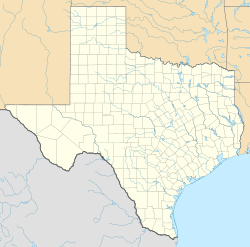Oriental Textile Mill | |
 The building's exterior in 2012 | |
| Location | 2201 Lawrence St., Houston, Texas |
|---|---|
| Coordinates | 29°48′21.9″N95°24′30.5″W / 29.806083°N 95.408472°W |
| Area | 1.9 acres (0.77 ha) |
| Built | 1893 |
| MPS | Houston Heights MRA |
| NRHP reference No. | 83004476 [1] |
| Added to NRHP | June 22, 1983 |
The Oriental Textile Mill, located at 2201 Lawrence Street in the Houston Heights neighborhood of Houston, Texas, was listed on the National Register of Historic Places on June 22, 1983. [2]
The mill is a complex of brick industrial buildings, with a four-story clock tower as its most distinguishing feature. [3] Originally built in 1893 for a mattress manufacturing company, the site has seen several uses, including a textile mill, fiberglass manufacturing, a bakery, and mixed use small businesses and live/work spaces. It was one of the first industrial complexes in Houston Heights, and is the last remaining. [4] [5]

